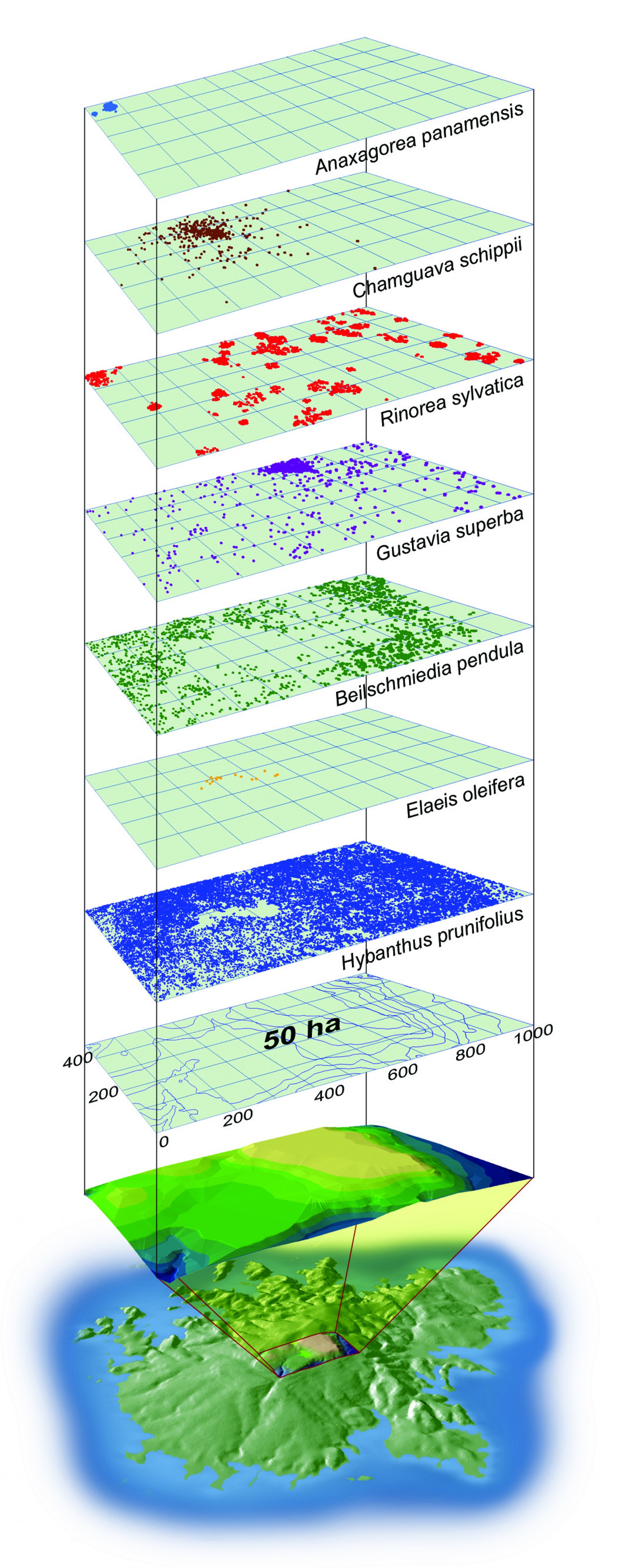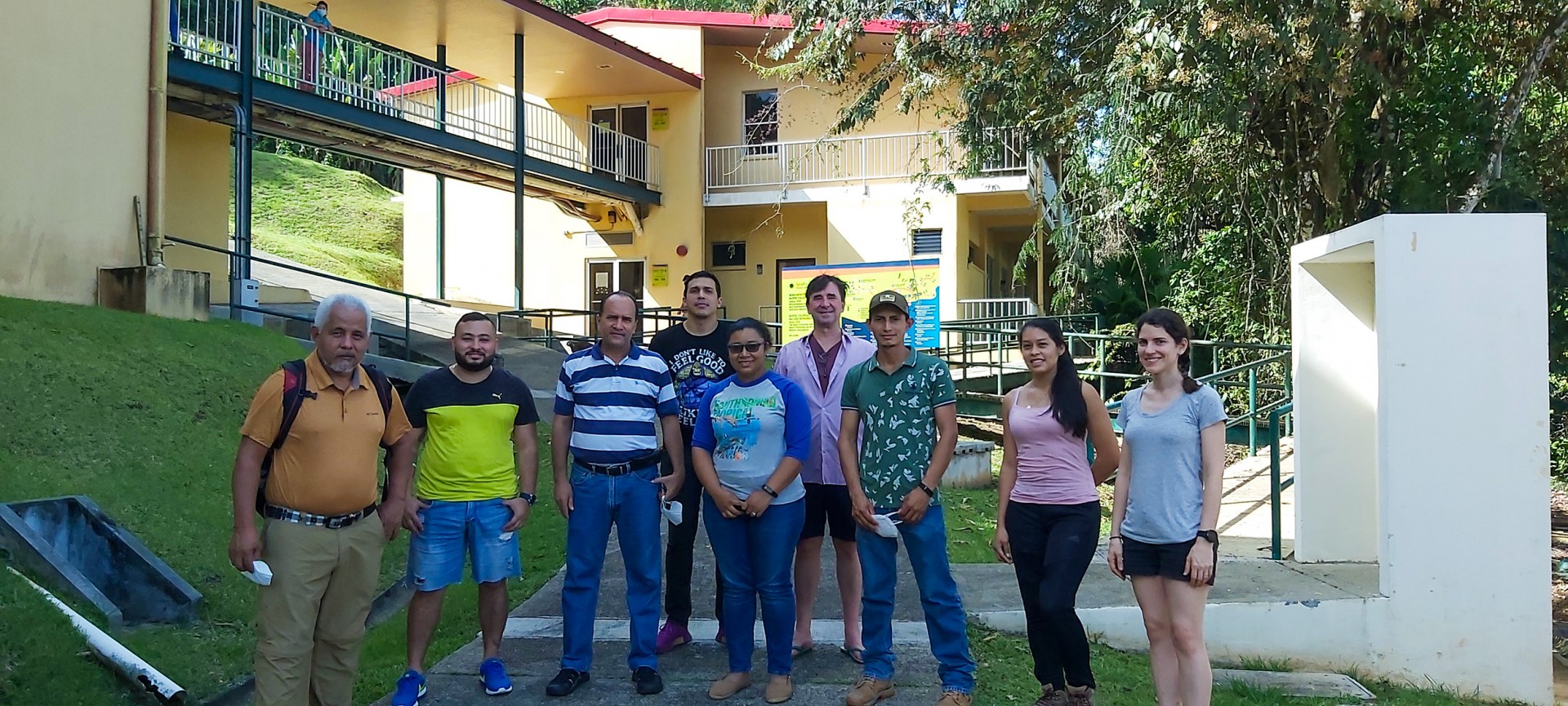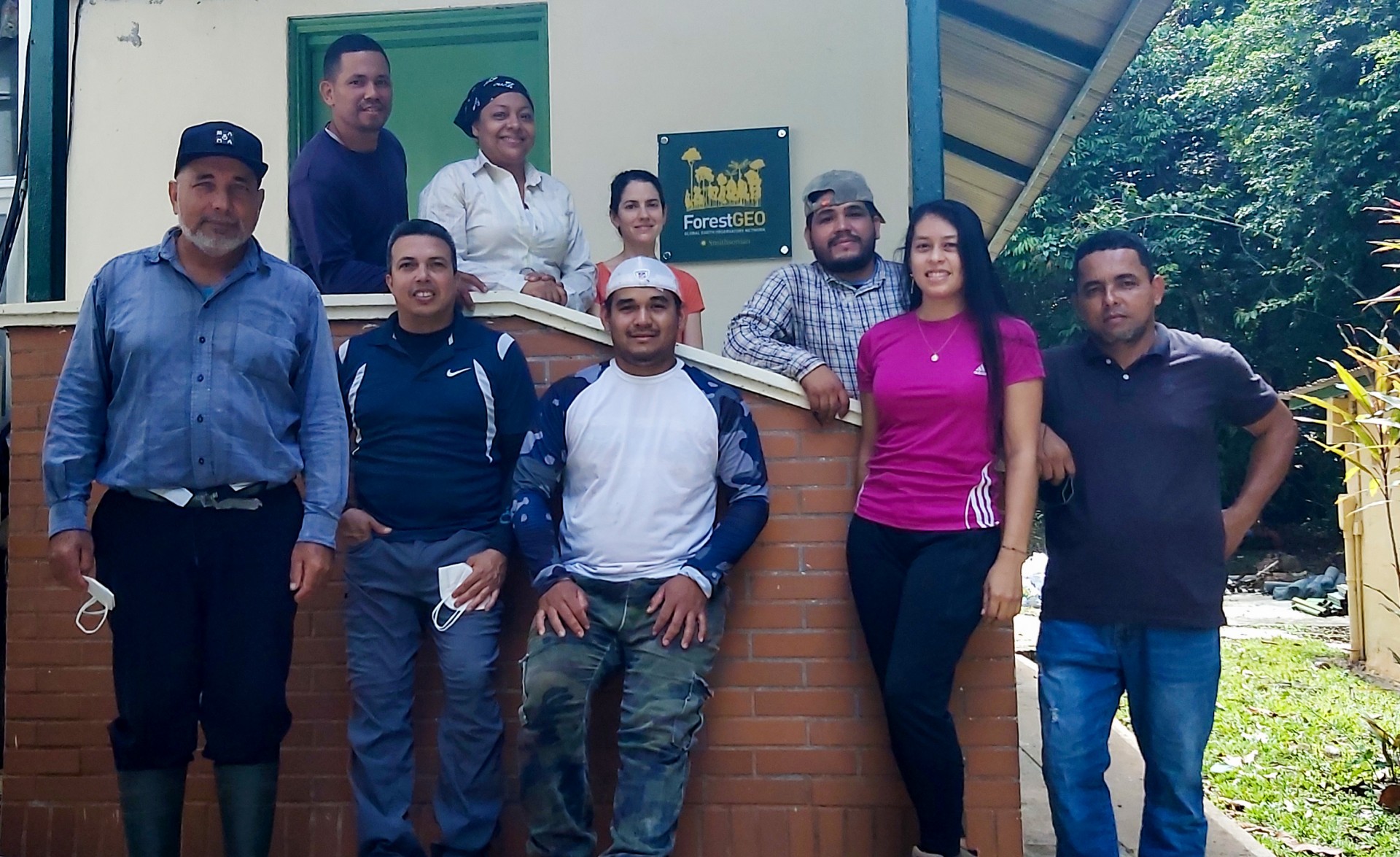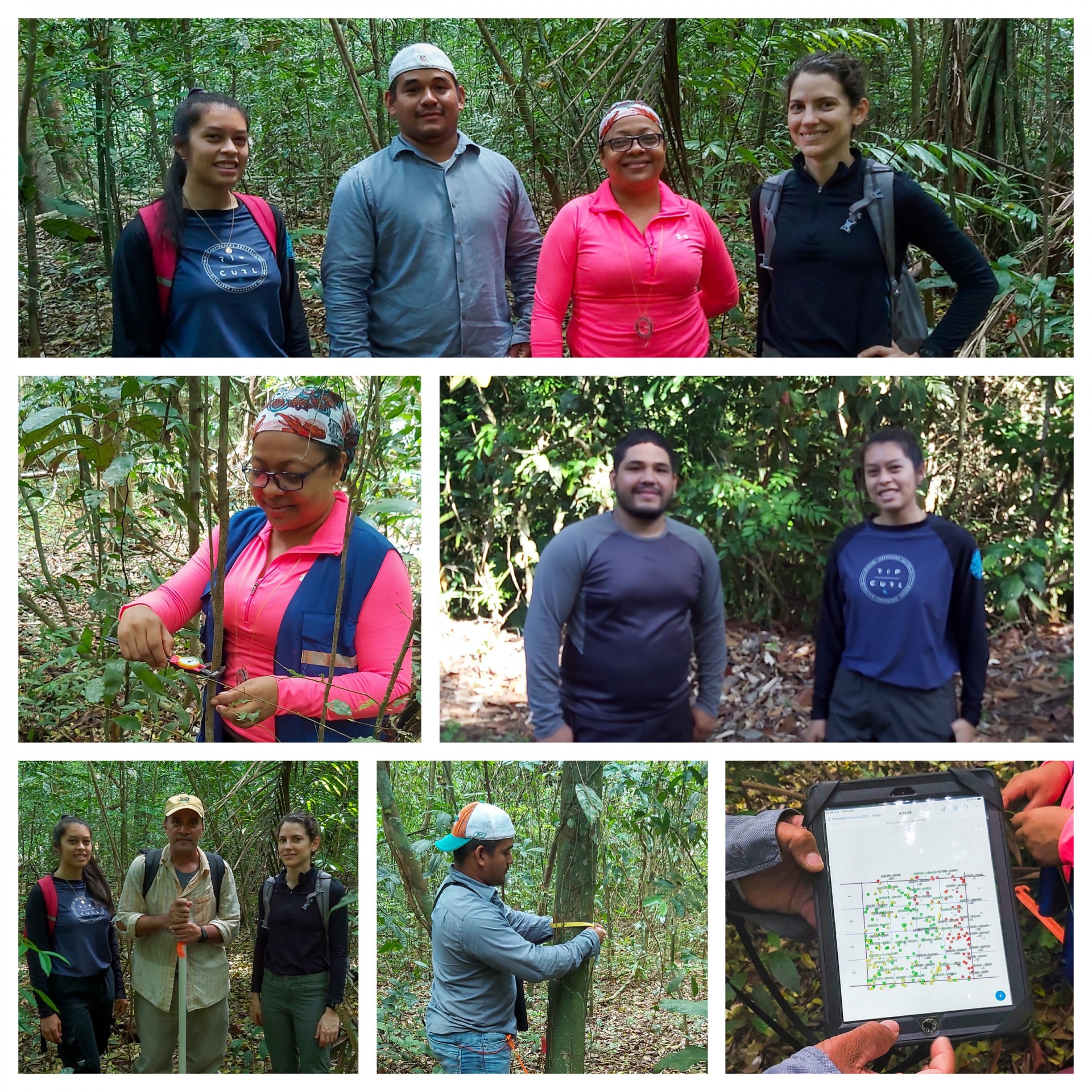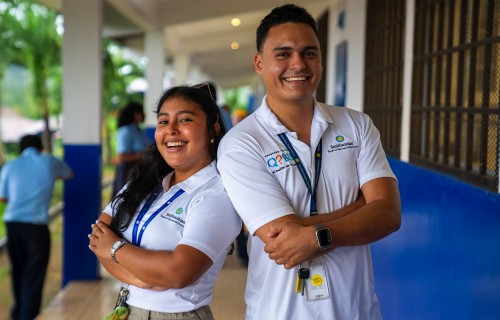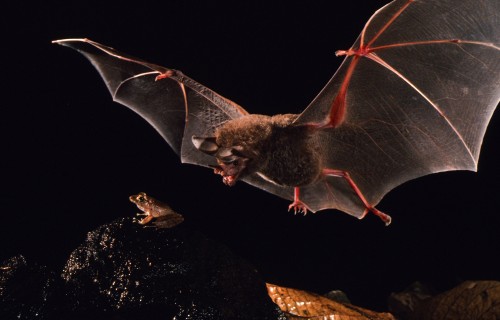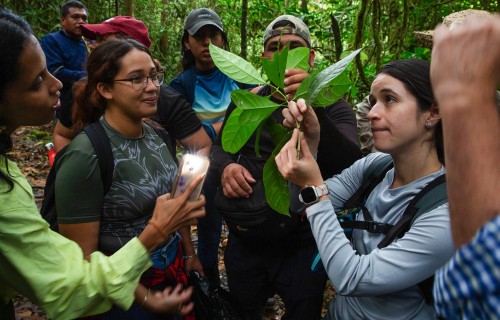Leafcutter ants have blind
spots, just like truck drivers
The Plot
Science is a team effort: 40 years of forest dynamics research on Barro Colorado Island
(Part 2 of 3)
Text by Omayra Meléndez and Camille Delavaux
Visiting scientist Camille Delavaux and intern, Omayra Meléndez, celebrate the 40th Anniversary of the ForestGEO 50-hectare plot, a unique forest ecology research tool, and the people who make it possible.
In 1980 ecologists Stephen Hubbell and Robin Foster established a 50-hectare forest research site in mature tropical forest on Barro Colorado Island in Panama. Just as governments and insurance companies census people to understand how long they live and other factors that predict their behavior, Hubbell and Foster would census tropical trees to reveal how the forest functions and how the astonishing biological diversity of the tropics came to be and is maintained through time.
Every five years a team of researchers and students would census all of the trees bigger than one centimeter in diameter (the size of your pinky finger) by marking, mapping, measuring and identifying each tree. This means that every five years more than 200,000 trees in the plot are measured, identified to species and located using GPS coordinates–a task which initially took 16 months, but has gotten faster and currently takes only about half a year. A total of more than 450,000 trees have been censused since 1980. The plot is incredibly important and has been extremely useful for ecologists and forest managers who need to understand how fast and how big tropical trees grow and how long they live. It is worth highlighting that the success of the plot gave rise to ForestGEO, a network of plots around the world that use exactly the same research methods and therefore can be compared, giving rise to a unique worldwide perspective on the way forests grow and respond to changes in the environment.
Data from the plot generates knowledge that we can put to work to understand much more about all of the organisms that make up the forest and their interactions, from animals to fungi and more. Among the most notable studies on Barro Colorado Island are exhaustive lists of plants, butterflies, birds and mammals that are extremely helpful as we try to comprehend tropical biodiversity. Although initially, the plot was created to focus on plants and played a pioneering role in understanding tropical forest dynamics, soon studies of a wide variety of other fields were integrated into the project: studies of interactions between the inhabitants of the forest and how a change in one part of the ecosystem may directly affect others. For example, the study of the interactions between fig trees and pollinating wasps shows the advantages for both because, thanks to their pollinators, the plants reproduce and, within what we call fig fruits, which are really structures that contain flowers, female wasps take refuge and lay their eggs. In a related study by a completely different group of authors, a decline in the number of howler monkeys on Barro Colorado Island can be explained by the fact that as secondary forest on the island becomes more mature, there are fewer individuals of certain fig species, one of the monkey’s primary sources of food.
The 50-hectare plot.
Crisscrossing the island, trails bear the names of many of the well known scientists who worked here: pioneers in diverse fields. Nevertheless, none of them, neither in the past nor today, work alone. They have indispensable help from assistants, local researchers and preexisting knowledge. Therefore, on this occasion, we decided to focus on the invaluable team who walks the trails, both within and outside the 50-hectare plot, where, through their hard work, they have conserved this great endeavor and its original goal. These people spend every day on the trails of the plots getting to know more about the plants and obtaining the knowledge they need to correctly identify them. Thanks to their efforts, the legacy of the 50 hectare plot and its creators is still up-to-date and the plot is still frequently visited by researchers from around the world to conduct state-of-the-art studies. Therefore, we spoke with some of the people involved in the census to find out who they are, to be enriched by their stories and to find out what motivates them to do this fairly unconventional job.
Part of the census crew with Camille and Omayra. From left to right: Salomón Aguilar, Josué Villarreal, Rolando Pérez, David Mitre, Tamara Ubarte, Stuart Davies, Luis Navarro. Eliecer Alvarado was not able to join us for the photo.
Part of the census crew with Camille and Omayra. From left to right: Luis Aguilar, Biancolini Castro, Luis Martínez, Anayansi Cerezo, Víctor Rojas, Richar Martínez, Guillermo Aguilar.
The census team this year, composed of people with different experiences and a range of academic levels, all share their fascination for nature. It is magnificent to realize we are connected by science, but also by our love for nature. Here there are folks with undergraduate degrees in biology, agricultural technicians, as well as students in related fields. Others have completely empirical knowledge. The majority of plot workers arrived on Barro Colorado with the support or recommendation from professors, co-workers, friends, colleagues or neighbors who already had some work experience on the island. Their motivations include: their attraction for nature, the challenges that they encounter every day, their ability to solve the problems that may present themselves during their time in the plots, and their desire to add to the legacy this immense effort will leave for future generations. Another inspiration for the workers is the knowledge that they acquire during their work in the forest, for example, the application of technology in the field that came with the arrival of iPads for data collection, the possibility of learning the characteristics important for correctly identifying plants and, with it, the ability to work in a tropical forest which permits them to leave to explore similar forests in other countries.
During our interviews we could not overlook some of the most moving statements, and we chose the following to underscore:
“When I get off of the boat I know what I’m coming to do, but I never know what I will find, and we are so fortunate for this treasure, that this field site and nature, is so accessible”
David Mitre
“There’s always something new to learn”
Víctor Rojas
“It’s a challenge because of the experiences we have every day: to be surrounded by animals like snakes, I’m terrified of snakes; or if a tree falls nearby, but it is interesting: I like what I do”
Anayansi Cerezo
“I’m motivated every day by the excitement of putting my talents as a botanist to work, as well as to have the opportunity to share amazing experiences in different Latin American countries at scientific conferences with people who do the same kind of work”
Rolando Pérez
We were pleasantly surprised to discover that our visit to the island coincided with the arrival of Stuart Davies, the director of the Smithsonian ForestGEO network. Currently 76 sites on five continents make up the network of long-term, large-scale forest research sites. We were able to talk to Stuart about how he came to study forests and became the director of this important network. First he told us about the initial goals for the creation of the plots: to understand the diversity and dynamics of temperate and tropical forests and to offer tools for research in each plot in order to continue this long-term study. Then he shared the idea that tropical forests represent the most complex ecosystem in the world, based on the great biodiversity they contain and from which we can obtain so many benefits. Finally, Stuart addressed the students with a clear message: Don’t be afraid of contacting scientists directly, because when there’s real interest, there is opportunity:
“Often the students are too shy. They don’t come and contact the scientists and say: Hey, what opportunities do you have for an internship or a fellowship where I can come and work?”
The census team during the interviews.

